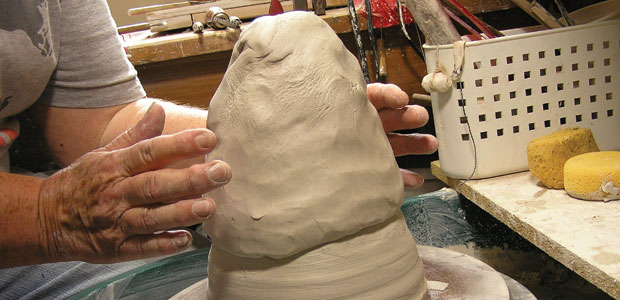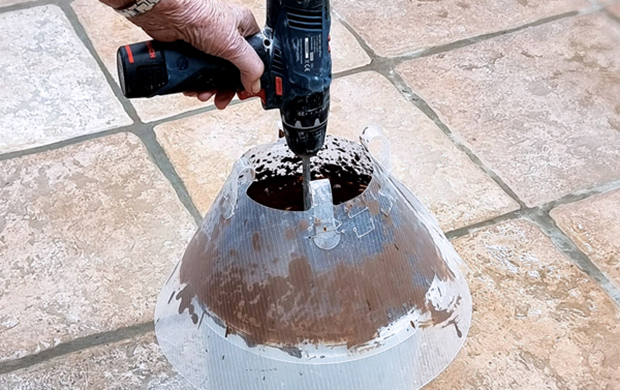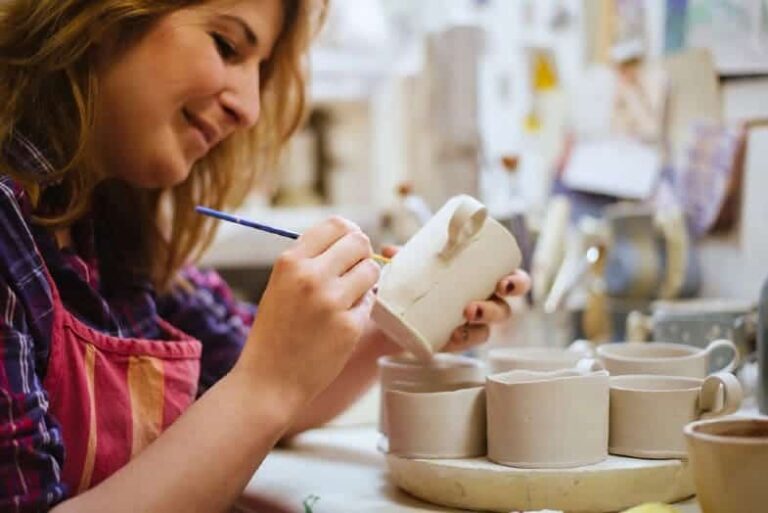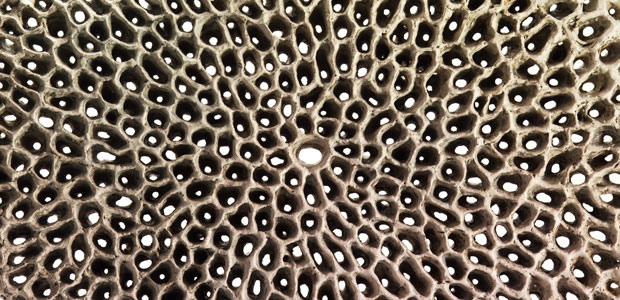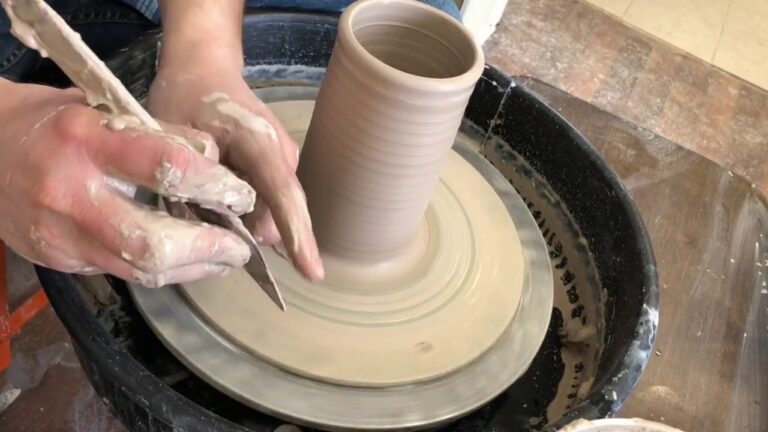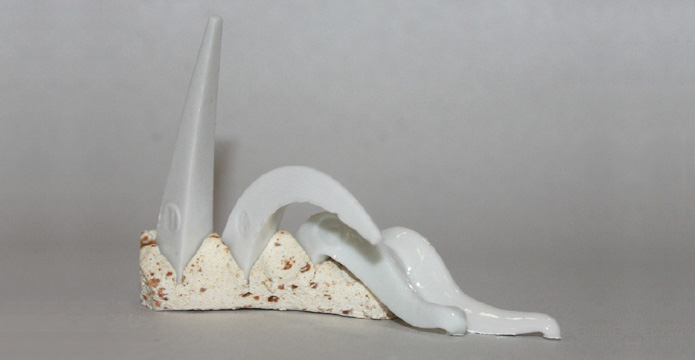
How To Guide for Ram’s Head Wedging
Ram’s head wedging is an easy way to prepare clay for making pottery. It is very easy to learn but is a necessary step to avoid problems while working with clay. There are two main reasons to use ram’s head wedging to prepare your clay.
Remove Air Bubbles
Air bubbles in your clay can cause the wall of a pot to become weaker or uneven. Sometimes air bubbles can cause issues when the pots are fired. Ram’s head wedging is the perfect way to remove air bubbles from your clay.
Even Consistency
Clay that is old, recycled, or reused can have hard or soft spots in the clay. If you are combining two different kinds of clay you usually want the two clays to be mixed completely. Ram’s head wedging is great for mixing clay so it becomes one even consistency throughout.
Grab some clay

Start with a chunk that isn’t too big to begin with. The more clay that you use the more effort it will take while ram’s head wedging. Form the clay into a rough cylinder or cube that is slightly longer than it is wide. Place the cylinder in front of you so the long dimension is flat on the table perpendicular to your body.
Press your palms into the clay

Press the bottom of your palms into the part of the clay that is furthest away from you. Press at an angle down towards the table, away from your body, and slightly in from the sides. Your fingers and upper part of your palm should be around the clay at both sides and pressing slightly in toward the middle. This keeps the clay from spreading out too wide as you wedge.
Rock the clay up towards yourself

Pull the end of the clay that is furthest from you up and rock it back towards yourself with the end closest to you on your work surface.
Press your palms into the clay higher than last time

Press your hands into the clay the same way as before but an inch or two higher than the last time. Keep the bottom of the clay against the work surface. The top of the clay should roll slightly toward you and be pressed down into the middle of the clay as you push your hands away from your body. Do not fold the clay. You do not want to trap air in the middle. If viewed from the side, the clay begins to form a spiral at the top as the top of the clay is pushed into the middle.
Repeat pressing and rocking as needed

Continue pressing the top of the clay down into the middle of the clay then rocking the clay toward you. Do this as needed until the clay reaches the proper consistency for your work and all the air bubbles are removed.
Check for consistency and air bubbles

You can cut the clay in half to make sure the clay is consistent all the way through. If you are mixing two different clays it may be easier to see darker or lighter spots or two different colors when the clay is not consistent or well mixed. If you see any bubbles or pockets of air continue wedging. You can also watch the bottom half of the clay as you are wedging it. If you have air bubbles in your clay you may see the clay separate along the little folds as air bubbles are pressed out of the clay. After wedging for a while, you should see less and less until all the air is removed.
Roll into a ball or cylinder to finish

When your clay has reached a consistency that you like and all of the air bubbles are removed you can form a cylinder by using less and less pressure during your last few presses. Or roll the clay toward you to press the folds at the bottom up into the spiral at the top to form cylinder. Now it is ready to make pottery.
Tools:
- Sturdy, non-stick work surface
- Wire tool (optional)
Materials: Clay

Other Tips for Ram’s Head Wedging
Standing is Preferred
It is recommended to stand at a sturdy work surface that is at waist height or slightly above while ram’s head wedging. Do not bend over while wedging your clay.
Don’t Try to Wedge Too Much Clay
To avoid injury, do not try to wedge too much clay at one time. It is better to wedge multiple smaller pieces of clay instead of one huge piece. Ram’s head wedging is a good workout for your upper body but if you experience any pain you should stop immediately. If you have a lot of clay to wedge you can use spiral wedging to wedge larger amounts of clay.
Wedging Time Varies
The time or number of wedges needed varies depending on the state of the clay that you begin with and your personal preference for the clay that you work with. Clay from a recycle bucket will probably need more wedging than brand new clay fresh from a factory.
Other Names for Ram’s Head Wedging
Ram’s head seems to be the most popular name for this wedging method. It is also referred to as bull’s head wedging or ox head wedging. Some potters also refer to it as “kneading” instead of wedging.
Other Options
If you have pain in your shoulders or wrists or you don’t like ram’s head wedging or can’t figure out spiral wedging, you can try stack and slam wedging instead.
Find Out More About Making Pottery
If you enjoyed learning about ram’s head wedging, be sure to view the articles about spiral wedging and stack and slam wedging. But remember, wedging is just the beginning of the pottery making process! You can learn how to make pottery and some of the great techniques that are used to make pots. You can also sign up for the Making Pottery Email List below:
Thanks for reading about ram’s head wedging!

